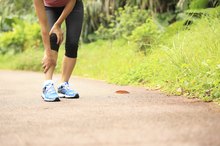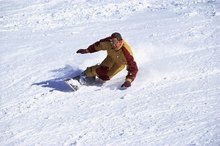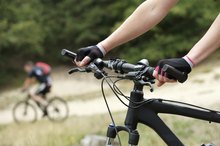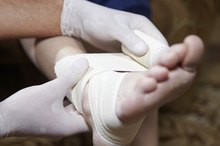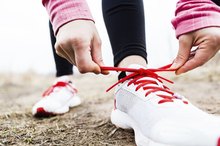How to Keep Your Legs From Aching From Skiing
Moderate soreness after a very intense ski day is probably inevitable. Many strategies can minimize the degree to which your legs will hurt after skiing, but if you are sore the next day, minimize the pain by taking non-steroidal anti-inflammatory drugs such as aspirin or ibuprofen. Massage, soaking in a hot bath tub or Jacuzzi and gentle stretching and low-impact moderate-intensity exercise such as walking or bicycling may also help your legs feel better. If your joints, rather than just muscles, are sore or if you have intense pain, numbness or difficulty walking, consult your health care provider.
Pre-Ski Conditioning
If you spend your summer indoors watching TV and playing video games, and then go out and ski moguls for a full day, your legs will hurt the next day. Instead, start a pre-ski conditioning program at least six weeks before the beginning of ski season to get your muscles ready for the stresses of skiing. Focus on strength training for your legs and interval training on a stationary bicycle at high resistance for muscular endurance. The better shape you are in, the less sore your legs will be after skiing.
Too Much Too Soon
What to Do for a Sore Calf From Hiking
Learn More
Even with a good conditioning program, don't assume you can ski as hard the first day of a new season as you did the last day of the previous season. Start off with half days and stay on groomed terrain, letting your legs gradually re-accustom themselves to skiing. Only downhill ski two or three days a week for the first month of the season. If you don't live near a ski area, and are taking a multi-day ski trip, alternate days downhill and cross-country or take a day off in the middle of a ski week to let your legs recover.
Terrain and Snow Conditions
Terrain and snow conditions affect how sore your legs will be after skiing. Relatively fresh groomed snow is easiest on your legs. Heavy, wet ungroomed snow makes turning difficult and causes leg soreness, as does skiing powder with improper technique. The impact from skiing moguls, steeps or terrain parks is more likely to cause soreness than smoother skiing on gradual, even slopes. The more challenging the terrain for your ability level, the more likely that your legs will ache.
Lessons and Technique
Pack Vs. Powder in Snowboarding
Learn More
The more efficient your skiing mechanics, the less your legs will hurt. If Olympic gold medalists still need ski coaches, recreational skiers can benefit from the expert advice of PSIA-certified ski instructors. An instructor will notice small details, such as incorrect hand position or uneven stance, that may be throwing off you balance and tiring your leg muscles.
Boots
To avoid aching shins, wear high-quality downhill ski socks and smooth out any wrinkles in your socks carefully before skiing. The foam liners in older boots, or boots skied more than 100 days, may be compressed and need replacing. Beginner boots, rental boots and improperly fitted boots not only can cause you shins to ache but can tire your leg muscles because they aren't transmitting your leg and foot motions effectively to your skis. A professional boot fitter can optimize boot performance.
Skis
Skis inappropriate for your body, skiing style or skiing ability may cause your legs to ache. Race skis are too stiff to turn comfortably at recreational skiing speeds and any ski too long or stiff for your ability level or skiing speed will take more effort to turn than a more appropriate ski. For moguls, choose a specialized mogul ski or quick-turning slalom sidecut; trying to turn a stiff cruising or GS ski through tight bumps will make your legs ache.
Related Articles
References
- America's Best Boot Fitters: FAQ
- FitSugar.com: Ease Sore Muscles After a Day on the Mountain
- StoneClinic.com: Strengthening and Skiing on the Aging Knee
- Blister Gear Review: Boot Fitting 101
- American Council on Exercise: What Causes Muscle Soreness and How is It Best Relieved?
- SilverStar: Why Take Lessons?
Writer Bio
Carol Poster began writing professionally in 1974. Her articles have appeared in "Outdoor Woman," "Paddler," "Ski Magazine," "Women's Sports & Fitness," "Dance News," "Show Business," "The Athenian," "PC Resource" and "Utah Holiday," among other publications. Poster holds an M.F.A. in creative writing from Eastern Washington University, as well as a Ph.D. in English from the University of Missouri.
